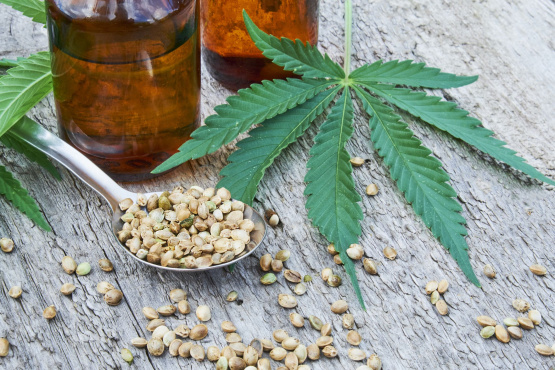Hemp vs. Marijuana: What’s the Difference?

Marijuana stocks are soaring because of recent changes to how hemp is regulated in the United States. That's got everyone asking: What are the top marijuana stocks to buy in 2019? In order to understand the impact from hemp deregulation on marijuana companies, it's useful to understand how marijuana and hemp are different.
Same but different
Marijuana is the dried flower of the female cannabis plant, and it can come from either the cannabis indica or cannabis sativa species. Hemp is only a member of the cannabis sativa family.
IMAGE SOURCE: GETTY IMAGES.
Although marijuana and hemp can both come from the cannabis sativa family, they're distinctly different. Marijuana is bushier with broader leaves, while hemp is leaner with shinier leaves.
It's differences in their chemical composition that really set them apart, though.
More than 100 chemical cannabinoids are found in cannabis, but the amount of these cannabinoids differs dramatically between hemp and marijuana.
Marijuana's most common cannabinoid is tetrahydrocannabinol (THC) -- the chemical cannabinoid associated with the plant's psychoactive effect. In marijuana, THC levels can reach 30%, depending on the strain, but THC levels in hemp are less than 0.3%.
The low levels of THC in hemp mean that, unlike marijuana, it has historically been used for industrial purposes. Hemp's rapid growth and strong fibers made it ideal for crafting durable rope, clothing, sail, and paper.
Although hemp won't get you high, it does contain significant amounts of another cannabinoid, cannabidiol (CBD), which is also found in marijuana. CBD is a nonpsychoactive cannabinoid, and its interaction with receptors in the central nervous system and immune system can offer medicinal benefits, making hemp-CBD concentrates popular ingredients.
IMAGE SOURCE: GETTY IMAGES.
Why it matters
Medical and recreational marijuana use is legal nationwide in Canada, so it's home to the largest publicly traded cannabis companies.
In the past, those companies were unable to do business in the U.S. because of restrictions placed upon them by the major stock exchanges. In order to maintain their listing, they can't conduct business in countries where the sale of marijuana is prohibited at the federal level.
In 1970, the Controlled Substances Act classified all cannabis, including hemp, as a schedule 1 drug. As a result, hemp cultivation was tightly controlled and limited for industrial and research purposes.
That's no longer true. The U.S. Farm Bill that passed in December contains language distinguishing hemp from marijuana for the first time. It allows states and the U.S. Department of Agriculture to create a licensing program supporting the widespread cultivation of hemp with THC levels below 0.3%.
The shift in federal classification of hemp has already led to Canada's biggest cannabis company, Canopy Growth (NYSE: CGC), announcing plans to enter the U.S. market. After receiving a license to process hemp in New York state, Canopy Growth plans to invest up to $150 million there on a hemp-focused industrial park where it can develop products containing hemp-derived CBD.
Will hemp move the revenue needle for marijuana stocks?
Including black-market sales, the Canadian marijuana market is worth about $6 billion annually, according to Statistics Canada. Canada's recreational market only opened last October, so it's too early to know exactly how much of those black-market sales will migrate to legal shops selling products made by Canopy Growth and its competitors.
Nevertheless, the size of Canada's marijuana market dwarfs the current size of the CBD products market in America. Spending on CBD products in the U.S. only totals in the hundreds of millions of dollars per year.
The U.S. CBD market could grow significantly, though, if companies create increasingly valuable consumer products that they're allowed to distribute widely. The potential associated with CBD edibles, beverages, and other products has some industry experts thinking CBD-product sales could total exceed $20 billion someday. That's a heady forecast, but even if the CBD market only grows to a few billion dollars annually, it would still be a big tailwind for marijuana stocks, including Canopy Growth. After all, Canopy Growth's sales over the past 12 months totaled just $73 million. Given the size of the potential opportunity relative to sales today, it's little wonder that hemp's potential has investors excited about pot stocks.
More From The Motley Fool
- Marijuana Stocks Are Overhyped: 10 Better Buys for You Now
- Your 2019 Guide to Investing in Marijuana Stocks
Todd Campbell has no position in any of the stocks mentioned. His clients may have positions in the companies mentioned. The Motley Fool has no position in any of the stocks mentioned. The Motley Fool has a disclosure policy.